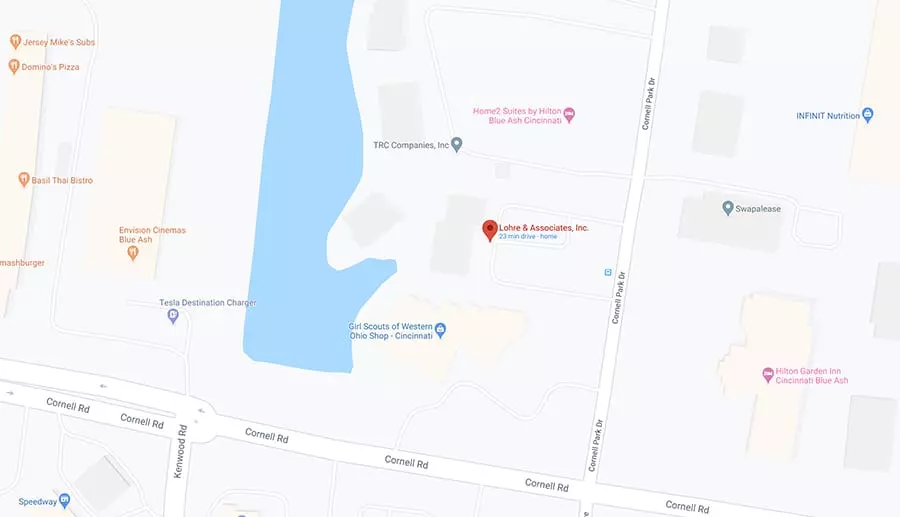Be intentional about including the following tactics in your new year marketing strategy As 2025…
Internet Marketing: Google Analytics Best Practices
After attending a Google breakfast hosted by TopSpot last week, we at Lohre & Associates learned some valuable information on how to use Google Analytics most effectively and efficiently in the industrial market and we thought it would be great information to pass onto you, our readers.
Understanding User Behavior:
This is a key component and probably at the heart of Google Analytics. The presenter, David Underwood from TopSpot, stated that the User Behavior tab in Analytics should be checked and monitored daily. User behavior includes New vs Returning visitor reports, Frequency & Recency and Engagement in time and pages. Knowing your user and how they function on your website is crucial to knowing how to maximize AdWords campaigns and your ROI in the realm of digital marketing. This allows you to better understand your users and provides information on behavioral patterns that can help drive content on your site. If you’re investing a lot of time and energy into developing one area of your website and don’t recognize that there may or may not be people using it, you are wasting time, energy and money on developing an unused portion of your site. This can even drive some companies out of the competitive market.
Internal Site Search:
One of the most valuable tools to have on your website is an internal site search. Allowing users to search through your site by typing in what they are looking for is not only extremely user friendly and makes their life easier, but it helps provide you with valuable information regarding how users are utilizing your website. This is prized data in the Google Analytics realm. This can not only help with SEO, but can also tell you where to invest more time and money into your website, if needed, and can give you information on AdWords campaigns and how to make great bids. Knowing what users are looking for gives you an advantage and helps you spend more efficiently on campaigns; getting more bang for your buck.
Analyzing Your Link Profile:
Building links can be very beneficial to your website, however if done improperly, it can be extremely detrimental. Previous Google algorithms rewarded link building, the process of linking to other websites from your website. Once companies realized that this could improve SEO, people went ballistic and now Google is much more stringent with linking and/or back linking regarding SEO. The newest algorithms reward the quality of the links themselves and not quantity. Mr. Underwood had some horror stories describing companies that had upward of 6,000 or more links (one horrible situation had 60,000!!) on their website to other websites and the detriment it caused to their Google search rankings. It is now very important to utilize Google Analytics to analyze your link profile. This will tell you if you have too many links or very low quality links. It should also be noted that sometimes it can take years to remove bad links from a website, so you want to be choosy in the first place. You should also expect that high quality websites may charge, upward of $1000.00, to have a link on your website; you must decide if the money is worth it or not.
Conversion Quality:
This point really resonated with me. You must really define what a conversion is and make sure that definition is clearly explained to both the sales and marketing teams. Some platforms and programs define a conversion by receiving a click on the contact us button or by receiving an email from a potential lead asking for more information; however, if the person contacting you is asking for a product or service you don’t offer, then is it really a conversion? The marketing team might think so because it popped up in their data as one, but the sales team won’t because they can’t sell what they don’t have. Example: If someone reached out to Lohre & Associates through the website, filled out a form for us to contact them, it would show up as a conversion for us; however, if they contacted us looking for a pet to adopt, we really can’t help them because we sell marketing and communications services. How is that conversion going to generate a lead? It’s not! (But, I am sure we would direct them to the nearest animal adoption agency, but that’s not what keeps us in business). So be sure to clearly define conversions and don’t always allow the data to make the final quality assessment in this category.
Deep Breath:
Google Analytics can be very overwhelming for individuals and companies. There is a lot of information to digest and work through, but once you get the hang of it, the benefits outweigh the anxiety. Here at Lohre & Associates it has always been a commitment, but we still learn more and more each day and love being able to share, not only our knowledge with our readers, but also our journey. We are happy to help with any questions you might have about Google Analytics and how it can benefit your company.
If you liked this post you would like, “Review: “Designing B2B Brands” for industrial marketing communications.”



